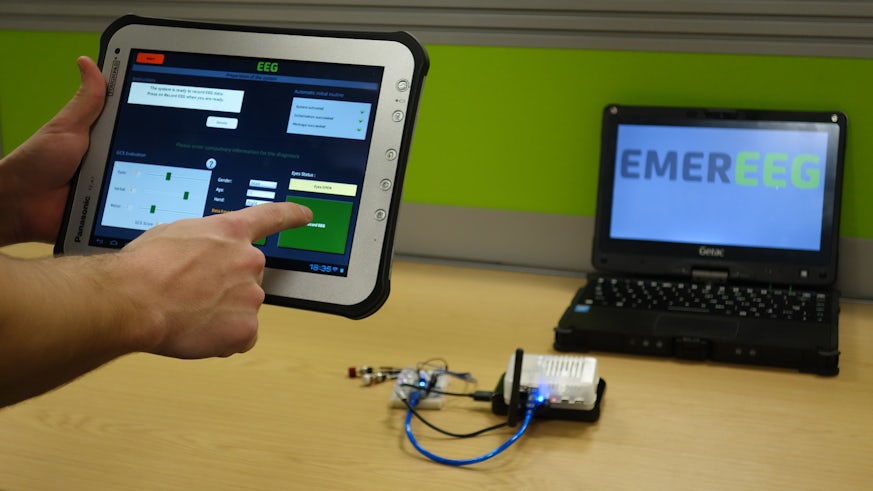Engineers to improve diagnosis of traumatic brain injury
26 March 2015

School of Engineering researchers have contributed to the creation and design of an early response medical system that could save thousands of lives and prevent disabilities.
The EmerEEG system is a portable medical device for the early diagnosis and treatment of traumatic brain injury (TBI). TBI is caused by an external force upon the head resulting in an impairment of brain function. The statistics show that TBI has become a major public health concern, with 1.2 million Europeans hospitalised annually.
The effects of TBI can lead to varying levels of disability (experienced by an estimated 8 million Europeans annually). It is thought that these figures may only be the tip of the iceberg, as a large number of mild TBI cases are never documented or examined in a medical setting and therefore not recorded.
In a current emergency situation, such as a car accident, explosion, or sport contact, paramedics are sent to the accident location to objectively assess the injury. The challenge for paramedics at the scene is that current detection techniques require large and expensive equipment that cannot be easily deployed, have a long setup time, and require highly specialised operators. These challenges mean that TBI may not be diagnosed or treated properly at the scene of the accident and, if left undiagnosed or untreated, can lead to various health problems.
Cardiff School of Engineering researchers have joined up with a number of industrial partners and partial funding provided by the Research Executive Agency of the European Commission FP7 program to solve this problem. The idea is to bring TBI detection and early treatment methods to the point of need, i.e. the scene of an accident, by developing a portable medical system for use by emergency services or in Accident and Emergency Units.
The EmerEEG system employs quantitative Electroencephalography (qEEG) and High Definition transcranial Electrical Stimulation (HD-tES) technologies incorporated into a portable one-size-fits-all EEG head device. EEGs can be used to measure brain activity in a non-invasive manner and requires only light equipment. The physical device also incorporates a tablet computer for control and local storage with a web-based graphical user interface and wireless data transfer capabilities.
The device can process data quickly and generate an automatic diagnosis through the user interface, which is easy to understand and navigate. The system is wireless-enabled and can back up the data immediately. It will also give paramedics the opportunity to access specialist telemedical support. Through a database, neurology specialists will be able to advise and approve diagnosis and treatment.The addition of support from a community of expert neurologists will increase the accuracy of diagnosis and may bring substantial savings to healthcare providers.
In the future, it is hoped that the EmerEEG system will also be used to monitor many other neurological conditions, such as epilepsy, and therefore not only lead to fewer deaths and disabilities as a result of traumatic brain injury, but also to improved quality of life, first aid and healthcare in remote and rural areas in general.
For further information on this project, please contact Bruno Albert or Rossi Setchi.